
h0lx - 2-10-2020 at 19:28
Recently, I have seen quite a few people in various places struggle with making copper(II) chloride - I decided to take some pictures and make a guide
thing, because I was preparing it for myself anyway.
Measure out 99.8g (400mmol) of Copper(II) Sulphate
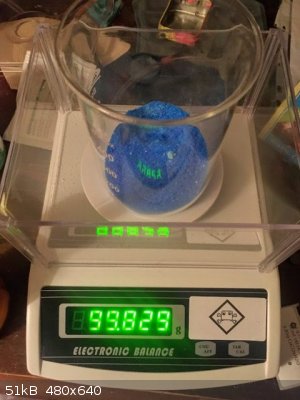
Set it to dissolve in hot water
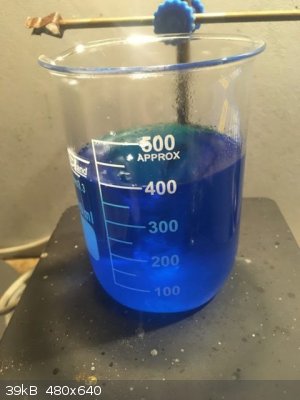
Meanwhile measure out 67.2g (800mmol) Sodium Bicarbonate
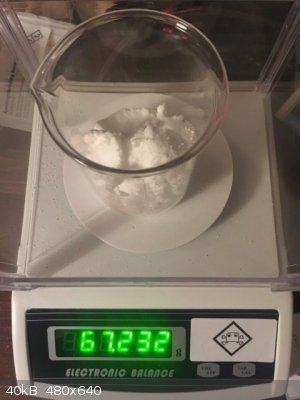
Once the CuSO4 has dissolved, pour it in a larger container (square plastic bucket seems best, because it makes decanting much easier)
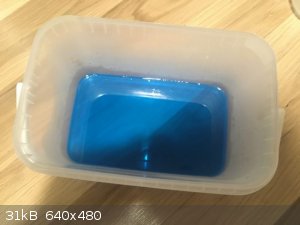
Start sprinkling in the bicarbonate, taking care not to add too fast, so as not to cause it foam over the edge
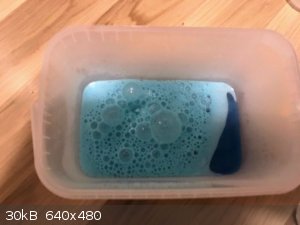
Add all the bicarbonate in, while occasionally stirring, keep agitating it by e.g. tilting it back and forth until CO2 stops being produced
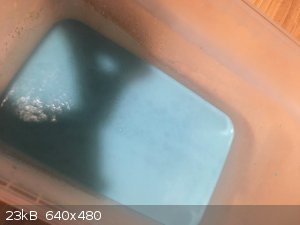
Fill the container to the top with water, stir well
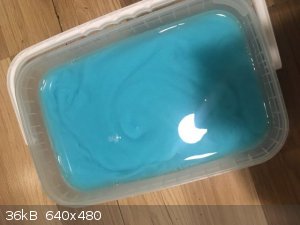
Leave it for 10-30 minutes to settle out
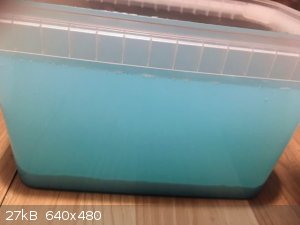
Carefully decant as much liquid off as you can (this is where the square shaped bucket really shows, why it is superior to the round ones) and refill
with water again. Repeat this wash cycle about 3-5 times, after which transfer the decanted solids into a beaker.
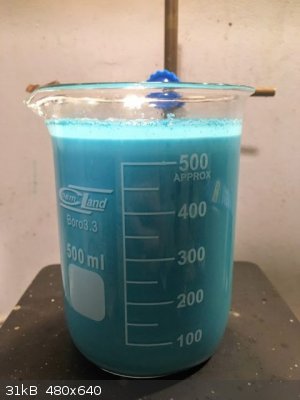
Let the solids settle and decant off as much water as you can, the more you eliminate here, the less you have to evaporate later
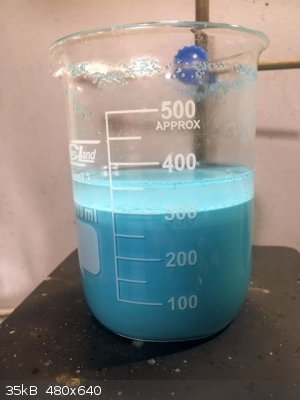
Now get your HCl and start adding it slowly, in very small portions, you do not want to overshoot or you have tons of nasty HCl fumes to deal with,
when you evaporate it later
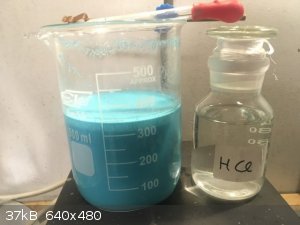
Ideally add a small amount, then let it react with a lot of stirring between each addition
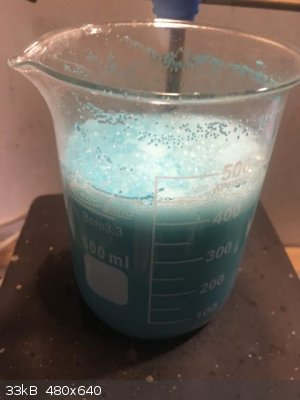
You want to have a bit cloudy solution as your endpoint, the rest will dissolve eventually and it will become clear, trust me, there is enough acid in
there
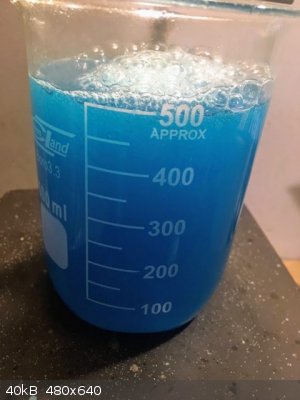
Now its time to evaporate the water in your preferred way. I used a pair of my "chem" pyrex oven trays and baked them
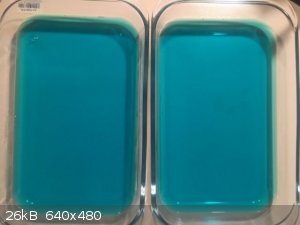
When the concentration and temperature rise, the solution turns intensely green. This is normal, it is the Tetrachlorocuprate anion forming in
solution.
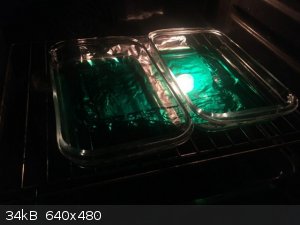
You can safely bake it dry, don't worry if it turns brown, you haven't burnt it, it's the anhydrous form, it happens often. Rate depending on your
ambient humidity, it will absorb enough moisture from the air to be a nice cyan colored dihydrate soon.
The obtained crystals can now be used as is or recrystallised further to purify. The theoretical yield is 68g.
I will update this post with final pictures and yield calculation, once it's done.
Lion850 - 2-10-2020 at 19:48
Thanks for this guide. I need to get an oven....
h0lx - 3-10-2020 at 03:14
87.9% yield


